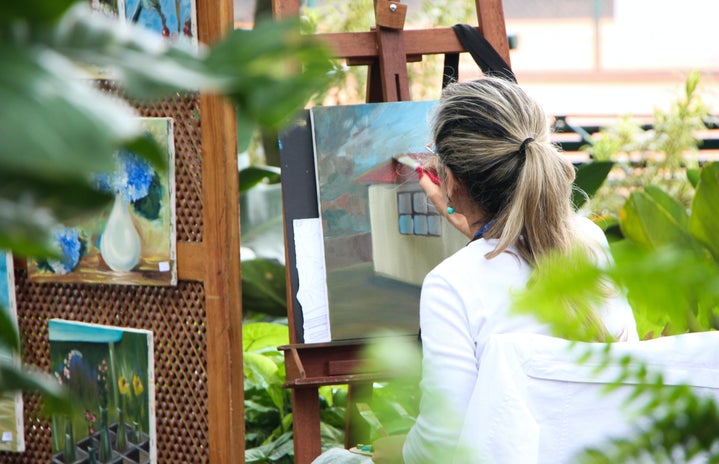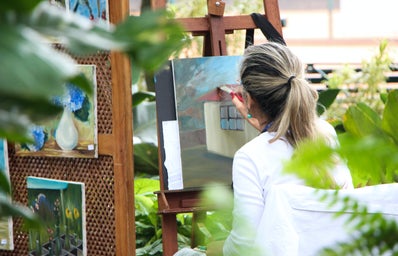Three pages into the Sunday morning newspaper, something caught my eye: a clip on an exhibit of Frida Kahlo and her partner Diego Rivera’s artwork was on display at Nashville’s Frist art museum, which was a mere three hours away. Ten minutes later I was behind the wheel and on my way to Nashville.
The Frida Kahlo, Diego Rivera, and Mexican Modernism from the Jacques and Natasha Gelman Collection exhibition ran at the Frist Art Museum in Nashville from May 24 to September 2. This sampler included iconic works of Kahlo such as Self Portrait with Red and Gold Dress (1941), Portrait of Diego Rivera (1937), Diego on My Mind (1943), and Self Portrait with Monkeys (1943).
Approximately one-third of Kahlo’s paintings were self-portraits. This deep exploration of self is one of the many aspects that makes Kahlo’s work and life so timeless and consistently relevant. Interspersed throughout her self-portraits were many photographs of Kahlo captured by the artist Lucienne Bloch. These real-life stills of Frida offered dimension to her self-portraits. Instead of giving the viewer something to compare and critique the differences between, these pictures showed the sense of self that Kahlo conveyed in each of her self-portraits.
Portrait of Diego Rivera (1937)
In person, Diego’s face appears to radiate light from the inside out, and each individual strand of hair was carefully added by the artist.
Diego on My Mind (1943)
This self-portrait is especially interesting when you consider the roots spreading out from her headdress. Do they represent the entanglement of Diego in her thoughts, the draining of her energy, or new growth?
Self Portrait with Monkeys (1943)
The deliberate choice to hang this piece on this burnt-orange wall enhanced the strong colors in the painting.
Frida’s work has become so well-known that most people – art enthusiast or not – recognize her name. On the drive to Nashville, I began to worry that I would be let down when I actually saw her work in person. Her art has been reproduced so much I was afraid the effect of her talent would be lost in the haze of her revered lifestyle and name. However, as I stood in front of Self Portrait with Necklace (1933), I understood that the popular focus on her lifestyle did not subtract from her talent; rather, the two were deeply intertwined and succeeded in mutual enrichment.
I strongly believe that most art can only be experienced fully when seen in person. Standing in front of the pieces Frida Kahlo painted of herself and the man she loved, you notice slight details, radiant hues, brushstrokes, and tones that are lost in the many copies of her work that are spread across the internet. These elements provide a completely different, more complete sense of her art.


